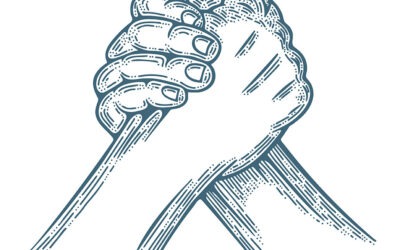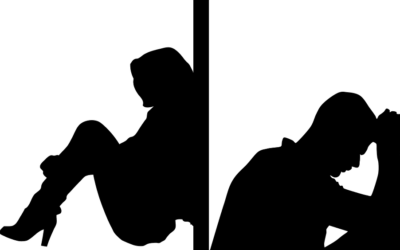The winter months can bring challenges that can be hard to navigate with the shorter days, the pressure of the holidays and the general heaviness that can come with this time of year.
The Effects the Winter Season Can Have on Our Well-Being
During the winter months, it’s common to experience feelings of loneliness, sadness and a specific type of depression, known as Seasonal Affective Disorder (SAD). SAD shows up when there is less exposure to natural sunlight, which disrupts the body’s circadian rhythm, lowers serotonin levels and melatonin production. This can cause disruptions in mood, sleep patterns and other related symptoms.
Experiencing loneliness during this time of year is also quite common. Loneliness is the feeling of being disconnected from yourself and/or others and is often accompanied by a sense of sadness or isolation. With colder weather, people tend to stay inside more, which can mean fewer opportunities for social interaction. For those who are grieving or don’t have close relationships, the holidays can be especially tough. The focus on family during this time can really highlight what might feel absent—whether that’s a romantic relationship, children, or loved ones who have been lost. It can also stir up feelings for those navigating estranged or difficult relationships. All of this takes a toll on our mind, body and emotions.
How Seasonal Affective Disorder and Loneliness Show Up in the Body
Most of us are relatively aware of the emotional, mental and behavioral effects of loneliness and depression, such as low mood, feelings of worthlessness or guilt, loss of interest in activities we once enjoyed, trouble concentrating and withdrawing socially. But one aspect that can be easily overlooked are the physical symptoms that accompany these emotional states. The problem with only addressing the emotional, mental and behavioral symptoms at the exclusion of physical symptoms is that it doesn’t adequately address the experience holistically, and as a result not as effectively. A good place to start is by linking emotional states to physical sensations in the body.
For example, if sadness were a place in your body, where would it be? How about loneliness or depression?
- Would it be the lump in your throat?
- Or in your chest that feels so heavy?
- In the pit of your stomach?
- Or how about your entire body, from head to toe?
Physiological symptoms of SAD and loneliness can show up in unique ways such as physical exhaustion and fatigue, sleep disturbances, appetite changes, weakened immune system, increased heart rate and various aches and pains. Your body can provide physiological cues to prompt you to pay attention, helping you to recognize your needs and take care of yourself by responding accordingly.
Listening to the Messages Your Body is Giving You
Words are not always needed for communication to occur. For example, our bodies can communicate with us through the physiological sensations and symptoms we experience. For example, if we feel parched and lightheaded, those uncomfortable sensations can be a way that our body might be telling us, “I’m dried out! Your energy, focus and mind depend on me. Please drink something hydrating soon!” Or if we’ve gone multiple days with poor sleep because we’ve stayed up late, resulting in feeling sluggish and fatigued throughout the day, our body might beg us, “please go to sleep earlier tonight, I need sleep to function at my best!”
The good news is that there are practical ways to respond to our body’s messages when we experience SAD or loneliness. Below are some examples of what your body might be communicating and ways you can effectively respond.
- “Don’t keep me in the dark all day!”
Light exposure is crucial for regulating mood and sleep cycles. Try to get at least 20-30 minutes of natural sunlight each day, especially in the morning. Because sunlight is limited during this time of year, consider purchasing a light therapy lamp, which is designed to mimic natural sunlight.
- “I need to move to feel good!”
Regular exercise can reduce fatigue, increase energy, and improve sleep quality. Activities like walking, stretching, yoga, dancing or cycling can release endorphins and help improve mood. Even 10-15 minutes a day is a great start and can make a noticeable difference over time.
- “Let me wind down—I just need some sleep.”
Poor sleep can worsen symptoms of depression and loneliness, and if you’re not getting enough sleep, it can make everything harder. Set up a nighttime routine that promotes relaxation and a consistent sleep schedule to ensure you’re getting enough hours of sleep. Since blue light from screens can interfere with sleep, limit screen time before bed and create a calming environment to help with the winding-down process. Consider dimming lights, lighting candles, taking a bath, reading, listening to calming music or using techniques like deep breathing or meditation to help you relax and unwind.
- “Hydrate and nourish me.”
Though it can be challenging during the holidays, try your best to maintain a healthy, balanced diet that includes mood-stabilizing foods, like whole grains, lean protein, and fruits and vegetables. It’s a good idea to eat at regular intervals throughout the day to keep your energy levels up. Dehydration can contribute to feelings of lethargy, irritability, and brain fog, so aim to drink enough water throughout the day to stay hydrated and energized.
- “Help me relax.”
Mindfulness practices can help you stay grounded and reduce physical symptoms like tension, anxiety, and fatigue. Simple techniques, such as breathing exercises or guided meditation, can promote relaxation and help manage stress and physical tension in the body. You can download apps like Calm or Headspace for guided meditations, or you can search YouTube for free meditation videos.
- “Give me something fun to do!”
Having creative outlets and engaging in activities you enjoy, such as painting, writing, crafting, or playing a musical instrument, can be a great way to help release pent-up emotions and reduce physical symptoms related to stress.
- “I could use some expert advice.”
Consulting with a healthcare provider can be helpful to explore treatment options, such as supplements, lifestyle changes or medication. Healthcare providers can guide you to take the best course of action to address any underlying causes or symptoms.
Help is Available
Coping with the unique challenges that this time of year can bring can be overwhelming, but you don’t have to navigate this season alone. At Tobin Counseling Group, we’re here to help you find the support you need to take care of your mind, body, and soul. You don’t have to face this season—or any season—alone. Taking that first step toward reaching out for support can bring a sense of hope, relief, and feeling a bit more at ease. And it may just be your body’s way of saying, “thank you.”




